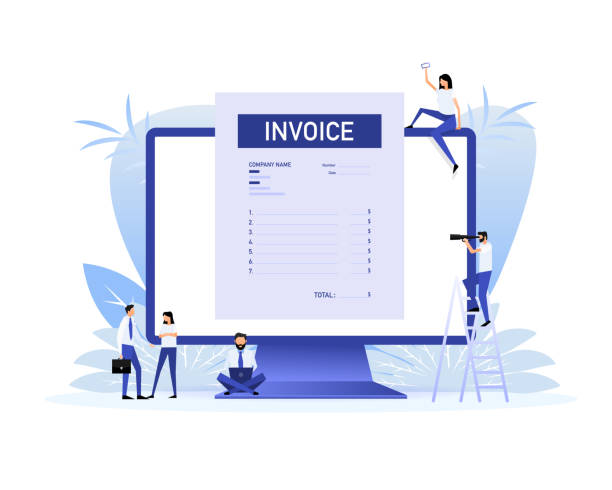Why Multilingual Website Design is a Necessity Today?

In today’s world, where geographical boundaries are blurred and businesses seek access to global markets, #multilingual website design is no longer a competitive advantage, but a necessity.
This approach allows your message to reach a wider audience across the globe.
Your website is essentially your business’s online representative and must be able to communicate with users from diverse cultures and languages.
Multilingual website design helps you build trust with international users and increase conversion rates.
By providing content in users’ native languages, you offer a personalized and pleasant user experience that directly impacts customer engagement and loyalty.
This approach is, in fact, an important step towards globalizing your brand.
From an #analytical perspective, various studies have shown that multilingual websites have higher traffic and longer dwell times.
This increased engagement directly leads to improved SEO rankings and online visibility.
Therefore, investing in a multilingual platform is a smart decision for any business looking to grow and expand into international markets.
This is also an #educational approach, as you become familiar with different cultures and language needs.
This significantly increases your website’s accessibility and reach.
This explanation helps you understand the importance of this approach.
Did you know that 85% of customers review your company’s website before any interaction?
Build a corporate website worthy of your reputation with Rasawb.
✅ Increase credibility and customer trust
✅ Attract high-quality leads
⚡ Get free website design consultation
Challenges Ahead in Designing and Developing an International Website
![]()
While the benefits of multilingual website design are clear, its implementation is not without challenges.
Is simply translating content enough?
Absolutely not.
This is a #thought-provoking question that many designers and website managers face.
One of the biggest challenges is managing multilingual content, which includes accurate translation, continuous updates, and ensuring cultural compatibility of the content.
There are also technical issues; such as selecting the appropriate infrastructure, correctly implementing hreflang tags for SEO, and ensuring fast website loading speeds in different geographical regions.
Choosing a suitable Content Management System (CMS) that adequately supports multilingual capabilities is a key decision.
Some systems require specific plugins, while others offer better built-in functionalities.
Furthermore, designing the user interface (UI) and user experience (UX) for users with different languages and cultures is highly important.
A design that works effectively in one culture might be confusing or even offensive in another.
Therefore, carefully reviewing these aspects from the outset is essential.
Addressing legal and privacy aspects in each country is also of high importance.
These factors increase the complexity of the project, but ignoring them can lead to failure.
Thus, comprehensive and meticulous planning is among the initial steps to success in this path.
Platform Selection and Technical Approaches in Multilingual Website Design
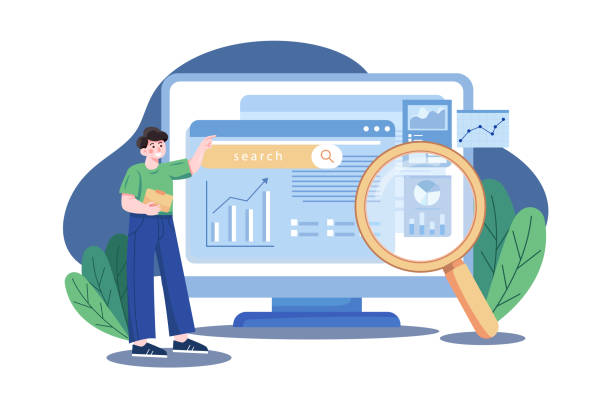
For success in multilingual website design, choosing the right platform and correct technical approaches is of paramount importance.
This section #specifically examines the available options and best practices.
One of the first decisions is selecting a CMS that has strong multilingual capabilities.
WordPress with plugins like WPML or Polylang, Drupal with native support, and Joomla are popular choices.
Methods for implementing multilingualism also include using separate Top-Level Domains (TLDs) for each country (e.g., .de for Germany), subdomains (e.g., fr.example.com), or subfolders (e.g., example.com/fr).
Each method has its own SEO and management advantages and disadvantages.
For example, using subfolders is usually slightly simpler in terms of SEO.
Content translation itself is an important topic.
Do you use human translation or machine translation?
Human translation offers higher accuracy and quality, but is more costly.
Machine translation is faster and cheaper, but may have semantic errors and requires review.
Multilingual website design should be supported by a strong database capable of storing and retrieving content in different languages.
It is also important that the website template supports Right-to-Left (RTL) for languages like Persian and Arabic.
Using string-based translation systems in coding also helps in better management of translations.
Finally, thorough testing of all languages is essential to ensure correct and flawless operation.
This is a #comprehensive guide to choosing the best approach.
| CMS Platform | Multilingual Capability (Default/Plugin) | Implementation Complexity | Estimated Cost (Starting) |
|---|---|---|---|
| WordPress | Plugin (WPML, Polylang) | Medium | Low to Medium |
| Drupal | Native (Core) | High | Medium to High |
| Joomla | Native (Core) | Medium | Low to Medium |
| Shopify (for E-commerce) | Plugin/Settings | Simple to Medium | Monthly Subscription + Plugins |
SEO Optimization for Multilingual and International Websites
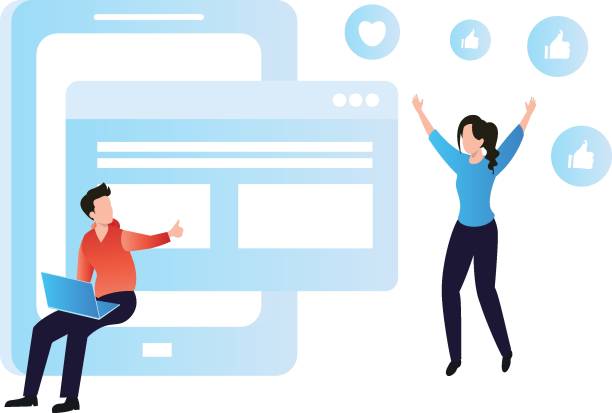
One of the most important aspects of multilingual website design is optimizing it for search engines (SEO).
Without proper SEO, even the best translations will not be seen.
This section is an #educational guide to achieving higher rankings in international searches.
Correct use of the hreflang tag is crucial.
This tag tells search engines like Google that different versions of a page exist for different languages or regions.
As an example, for a page available in Persian and English, appropriate hreflang tags should be placed in the head section of the HTML document.
Keyword optimization for each language is also essential.
A keyword that is effective in one language may not have the same meaning or popularity in another.
Keyword research should be conducted separately for each language and region.
In addition, separate XML sitemaps for each language can help search engines crawl and index your content.
Website loading speed and responsiveness on various devices, especially mobile, have increased importance for international SEO.
Multilingual website design should be based on these principles.
Internal and external linking should also be done carefully; links should point to the appropriate language versions.
Furthermore, creating localized and unique content for each market can help improve SEO.
This approach is not only more appealing to search engines but also to users, making your website recognized as a credible source.
Finally, monitoring SEO performance and adjusting strategies based on data is very important.
Are you frustrated with the low conversion rate of visitors to customers on your e-commerce site?
With professional e-commerce website design by Rasawb, solve this problem forever!
✅ Significantly increase visitor-to-customer conversion rates
✅ Create an excellent user experience and build customer trust
⚡ Get free consultation!
User Experience (UX) in Multicultural Website Design
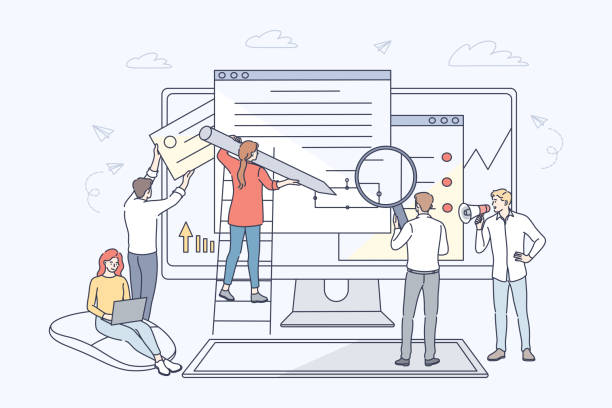
User Experience (UX) plays a vital role in the success of a website, and in multilingual website design this importance is doubled.
A website should be optimized not only linguistically, but also culturally for its target users.
This section is a #guide to improving UX in multicultural environments.
Language selection should be easy and accessible, usually via a dropdown menu or flags in the header or footer.
But care should be taken as flags do not always represent language and can cause misunderstanding.
It is better to display the full language name (e.g., “فارسی” instead of “Persian”).
Layout and visual design should also align with cultural preferences.
For example, in some cultures, simplicity and minimalism are preferred, while in others, more detail and rich colors are popular.
Typography and fonts should also be appropriate for each language and ensure readability.
Text direction (e.g., Right-to-Left for languages like Persian and Arabic) must be correctly implemented to improve the reading experience.
Multilingual website design must also pay attention to images and symbols, as they may have different meanings in different cultures.
For instance, colors or hand gestures might be positive in one culture and negative in another.
The payment process (for e-commerce sites) should support local currency and popular payment methods of each region.
Providing customer support in different languages also significantly helps in increasing trust and user satisfaction.
The ultimate goal is to create a seamless and comfortable web experience that makes the user feel the website was designed specifically for them.
Content Management and Translation Workflow in International Websites
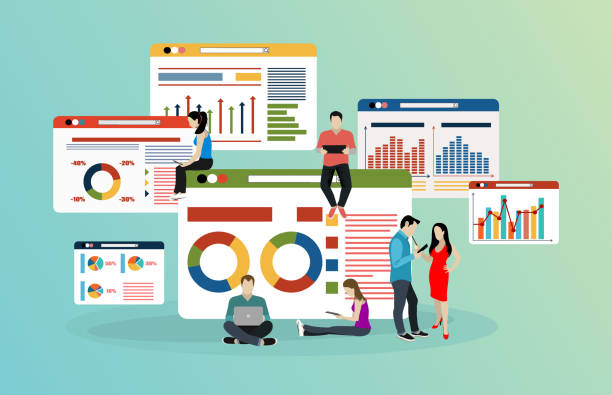
Content management and establishing an efficient workflow for translation are the cornerstones of success in multilingual website design.
This section #explain and #educate you on optimizing your processes.
First, a comprehensive content strategy must be developed that considers the needs of each target market.
Will the content be the same for all languages, or will it require localization (localization) and creation of unique content for each region?
Localization goes beyond translation and involves adapting content to the customs, idioms, and even sense of humor of a culture.
Choosing the right tools for Translation Management Systems (TMS) can greatly simplify the process.
These tools allow you to extract content from your CMS, send it for translation, and easily re-import it into the site after translation.
Systems like memoQ or SDL Trados GroupShare are popular in this regard.
Creating a glossary (glossary) and translation memory (translation memory) is also very useful for maintaining consistency in terminology and reducing translation costs in the long run.
Multilingual website design should be initiated with an approach that facilitates translation and localization from the start.
Responsibilities must be clearly defined; who creates the content, who sends it for translation, who translates it, and who reviews it?
A strong and coordinated content management team is essential, especially in large projects.
Updating content in all languages is also an ongoing challenge that requires planning and precise processes to keep language versions consistent with each other.
Finally, gather feedback from local users and improve your content based on it.
Maintenance, Updates, and Security in Multilingual Websites

After implementing multilingual website design, the maintenance and update phase begins, which is of high importance.
This is a #news and #technical aspect often overlooked but vital for long-term stability and success.
CMS platforms, plugins, and themes require regular updates to remain secure and perform optimally.
These updates must be tested across all language versions to ensure no issues arise.
It is possible for an update in one particular language to cause layout or functionality disruption.
Continuous monitoring of website performance, including loading speed, broken links, and 404 errors, is essential across all languages.
Tools like Google Analytics and Google Search Console can provide valuable data in this regard.
Website security, especially for e-commerce sites that collect sensitive user information, is very important.
Using SSL/TLS certificates, Web Application Firewalls (WAF), and regular security scans are essential to identify and fix vulnerabilities.
Multilingual website design also requires a strong backup plan that can quickly restore the website in case of an issue.
These backups should include all files and databases for each language.
Maintaining translation quality over time is another challenge.
New terms may emerge in your business or target languages that require translation updates.
Periodic reviews by native translators are recommended.
These continuous maintenance efforts help ensure the long-term stability and success of your site and guarantee that your website always remains a reliable and up-to-date resource.
| Activity | Description | Frequency (Suggested) |
|---|---|---|
| Update CMS and Plugins | Install latest versions and security patches. Test after each update in all languages. |
Monthly/Quarterly |
| Check for Broken Links | Find and fix 404 links and broken internal links in all languages. | Monthly |
| Full Site Backup | Complete backup of files and database, including all language content. | Weekly/Daily (depending on changes) |
| Security Check | Scan for malware, check for vulnerabilities, ensure SSL validity. | Monthly |
| Translation Quality Review | Content review by native speakers for accuracy, cultural appropriateness and new terminology. | Quarterly/Annually (depending on content changes) |
Measuring Success and Performance Analysis of Multilingual Websites
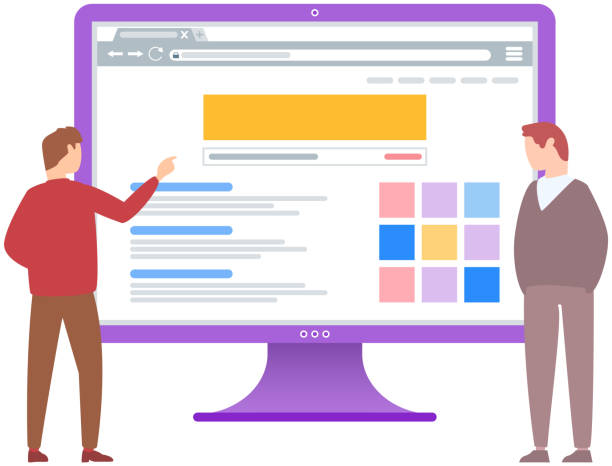
Measuring the success of a multilingual website design is not limited to overall traffic.
For a true understanding of its effectiveness, a precise #analytical approach is needed.
Tools like Google Analytics allow you to analyze the performance of each language version separately.
You can observe which countries users are coming from to which language versions, how long they stay, and what the bounce rate is.
This data shows you whether your content aligns with the needs of users in each geographical region.
Monitoring the conversion rate (conversion rate) for each language is also crucial.
Do Spanish users make purchases or complete forms as often as English users?
If not, what could be the reasons?
These differences might be due to translation issues, cultural matters, or specific technical problems related to that language.
Multilingual website design requires a comprehensive perspective that encompasses all these factors.
Also, tracking the keywords users search for in each language helps you improve your SEO strategy for each market.
International SEO tools can provide useful information in this regard.
Collecting direct feedback from users through surveys or contact forms is also an effective way to identify problems and weaknesses.
Customer Satisfaction in each language should be continuously monitored.
Finally, the profitability and Return on Investment (ROI) for each language version should be evaluated to determine if the investment in that particular language was justified.
This data enables you to make informed decisions for optimizing and expanding your multilingual website in the future.
Disappointed with your e-commerce site’s low conversion rate? Rasawb transforms your e-commerce site into a powerful tool for attracting and converting customers!
✅ Significant increase in visitor-to-buyer conversion rate
✅ Unparalleled user experience for increased customer satisfaction and loyalty⚡ Get free consultation from Rasawb!
Common Mistakes in Multilingual Website Design and Solutions to Avoid Them
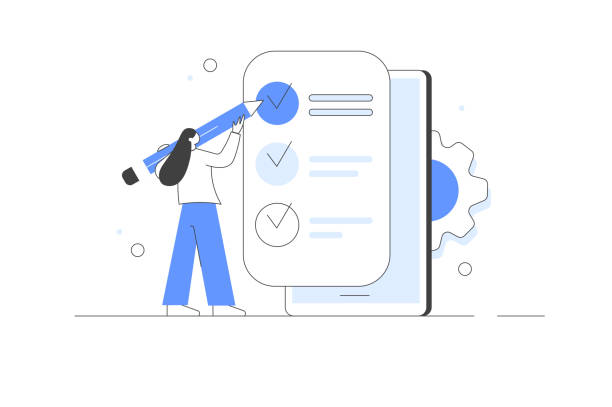
In the process of multilingual website design, there are common mistakes that can lead to reduced effectiveness and even project failure.
Understanding these mistakes and solutions to avoid them will be a #guide and #entertaining lesson for you.
One of the biggest mistakes is purely machine translation without human review.
Machine translations may lack cultural accuracy and local idioms, leading to unnatural and even humorous content.
The solution is always to use native and specialized translators and to review the content after translation.
Another mistake is neglecting international SEO and not using hreflang tags or optimizing keywords for each language.
This prevents your website from being seen in local searches.
The solution is to properly implement hreflang and perform keyword research for each language.
Lack of attention to user experience (UX) and responsive design for all languages, especially Right-to-Left (RTL) languages, is another common mistake.
This can lead to an unpleasant user experience.
Ensure your design is optimized for all writing directions and devices.
Disorganized content management and the lack of a defined translation workflow can lead to inconsistencies and irregular updates.
Use a TMS (Translation Management System) and have a clear process for creating and updating content.
Finally, neglecting local user feedback and failing to analyze website performance in each language means you cannot identify and improve weaknesses.
Actively listen to feedback and analyze data.
By avoiding these mistakes, you can ensure that your multilingual website design is implemented in the best possible way and achieves its goals.
The Future of Multilingual Website Design and Emerging Technologies

The future of multilingual website design is full of exciting innovations and advancements.
This section #news and #analyze emerging technologies and future trends.
One of the most important trends is the significant progress in Artificial Intelligence (AI) and Natural Language Processing (NLP).
Machine translation is continuously improving and, using neural networks, produces translations that are much closer to human translation.
These advancements can make the translation process faster and more cost-effective, although the need for human review still remains.
Blockchain technologies may also be used in the future to manage secure and transparent translation and localization processes.
Virtual Reality (VR) and Augmented Reality (AR) technologies can also revolutionize the multilingual experience, allowing users to view content in richer, more interactive environments in their own language.
Content personalization based on geographic location and user language preferences, beyond manual language selection, is also expanding.
Systems will be able to intelligently provide the appropriate language and content to the user.
Multilingual website design is moving towards headless CMS platforms, which provide greater flexibility for delivering content in different languages across various channels (web, mobile, IoT devices).
These developments promise a future where global communication through websites will be much smoother and more inclusive.
Frequently Asked Questions
| Question | Answer |
|---|---|
| What is a multilingual website? | It is a website whose content is available to users in several different languages. |
| Why should we design a multilingual website? | To expand access to international audiences, increase site traffic, improve SEO in target markets, and provide a better user experience for non-Persian speaking users. |
| What are the main methods for implementing a multilingual site? | Using subdomains (e.g., en.mysite.com), using subdirectories (e.g., mysite.com/en/), and using separate domains for each language (e.g., mysite.com and mysite.de). |
| Which implementation method is better for SEO? | Generally, using subdirectories (language folders) is often recommended due to the transfer of main domain authority to other languages. |
| What is the Hreflang tag and what is its use? | It is an HTML tag or HTTP Header that tells search engines which version of a page is suitable for which language or geographical region. This tag prevents Duplicate Content and improves SEO. |
| How is a Language Switcher designed? | Usually by using a dropdown menu, button, or flags in the header or footer of the site, which allows the user to select their preferred language. |
| Is automatic (machine) translation suitable for a multilingual site? | No, machine translation usually has low quality and many errors that can damage the site’s credibility. Human translation or a combination of human translation and machine editing is recommended. |
| What are the most important SEO tips in multilingual website design? | Correct use of the Hreflang tag, having an appropriate URL structure for each language, translating titles and meta descriptions, translating core content, and internal linking between related language versions. |
| Should all site content be translated? | Depends on the strategy. Usually, the main and important content of the site should be translated. Less important sections or blogs may not require full translation. |
| What are the main challenges in multilingual website design? | Managing content in different languages, translation costs, technical issues related to URLs and language tags, template compatibility with Right-to-Left (RTL) languages like Persian and Arabic, and managing multilingual SEO. |
And other services of Rasa Web advertising agency in the field of advertising
How to use mixed advertising in blogs to attract customers?
The role of advertising tailored to customer needs in increasing sales of audio and video products
How to use mixed advertising on online education platforms?
How to optimize ads for audio and video equipment manufacturers on industrial websites
Strategies for attracting customers for audio and video equipment manufacturers through industrial ads
And over hundreds of other services in the field of internet advertising, advertising consultation and organizational solutions
Internet Advertising | Advertising Strategy | Advertorial
🚀 Revolutionize your business’s digital transformation with Rasa Web’s internet advertising strategies and advertorials.
📍 Tehran, Mirdamad Street, next to Bank Markazi, Southern Kazeroon Alley, Ramin Alley, No. 6

